
Internet famous and famous for being famous are two common terms of derision used in reference to online celebrities like bloggers and street style stars. This photo essay, shot on the sidewalks outside runway events at New York Fashion Week between 2013 and 2015, documents the intimate negotiations and messy entanglements between photographers and their subjects that lead one person to become a street style star over another. There is no such thing as Internet famous, the essay concludes. There is only being famous, a tenuous status forged largely in-person through bodies interacting in physical space.
Review Process
From its inception in 2012, the Photo Essays section of the Cultural Anthropology website has used a hybrid peer-review process that is closed when a submission is sent out for review (i.e., double-blind) and then opened when the author begins his or her revisions. The goal of this process is to put author(s) and reviewers in direct discussion, beyond the usual limitations of double-blind review. Once the essay is published, the discussions between author(s), reviewers, and editors can be opened still further to the reader/viewer via social media.
The reviewer comments appear below, after the images and essay text.

Download “Internet Famous in Real Life: Becoming a Street Style Star at New York Fashion Week” by Brent Luvaas as a pdf booklet.
Photo Essay
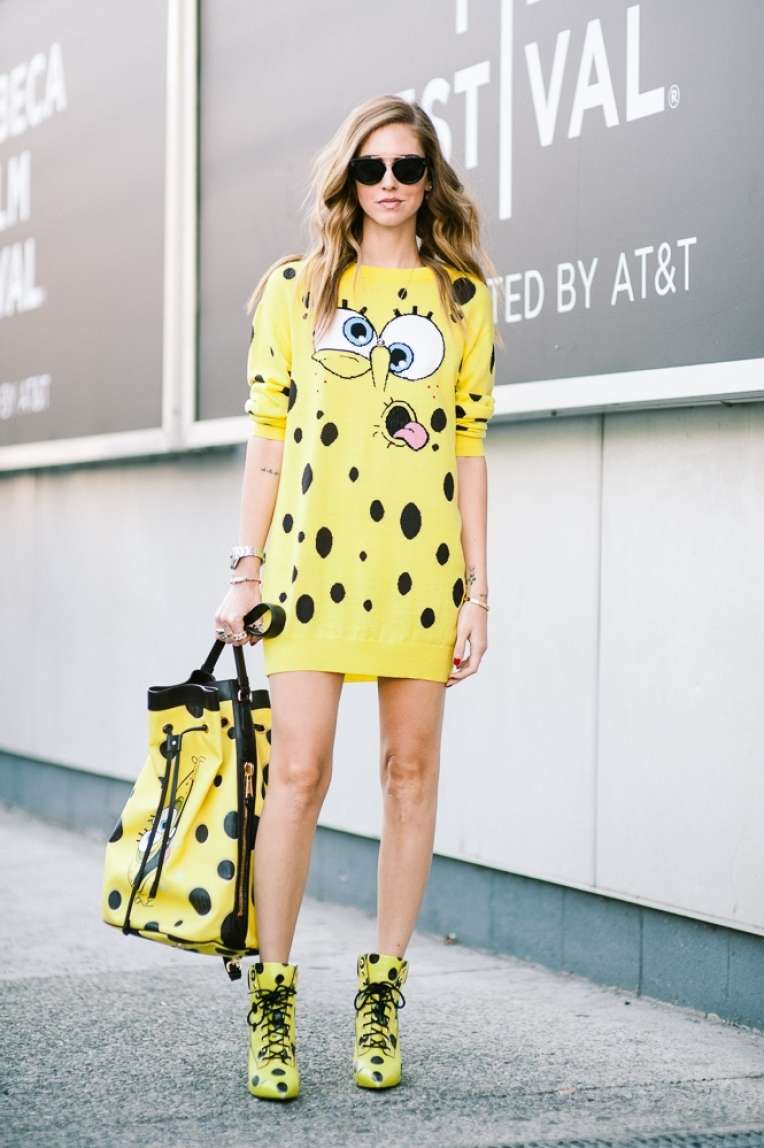
Chiara Ferragni. Nickelson Wooster. Miroslava Duma. Irene Kim. None of them are exactly household names, and yet all of them are famous on the Internet, “microcelebrities” (Marwick 2013) of the online fashion world with hundreds of thousands of Instagram followers, Facebook likes, and RSS subscribers, and a devoted viewership who actively seek out their photos from the over 1.8 billion posted online each day. More precisely, they are street style stars, known for their distinctive sartorial sensibilities, sensibilities they flaunt on the sidewalks outside fashion events in New York, Paris, London, and Milan.

The carefully put-together looks of street style stars are documented on well-known street style websites like The Sartorialist, I’m Koo, STREETFSN, and Le 21ème, as well as major online fashion publications like Style.com, Vogue.com, and New York Magazine’s The Cut. Pages upon pages of images pop up for these stars on a quick Google search. Whole Tumblr galleries are devoted to each, with names like Chiaraddicted, weloveirenekim, Fuckyeahmiroslavaduma, and Fuckyeahnickwooster. Each, in turn, has forged a career out of the tenuous success that their online visibility has granted them—Chiara Ferragni, for instance, as a personal-style blogger turned street style star turned brand ambassador and model; or Nickelson Wooster as a style consultant turned menswear icon turned creative director of men’s clothing at JCPenney, turned, at last, free-agent entrepreneur, the ultimate personification of neoliberal agency (see Gershon 2012). Street style stars perform the affective (Hesmondhalgh and Baker 2011), “venture” (Neff 2015) and “glamour labor” (Wissinger 2015, 2) so characteristic of the cultural industries today. They have not only adapted to this hypermediated moment of unprecedented brand intrusion and suffusion, they have embraced and embodied it, using their own self-consciously branded personae to stand out in a cluttered field of visual noise (cf. Novak 2013).
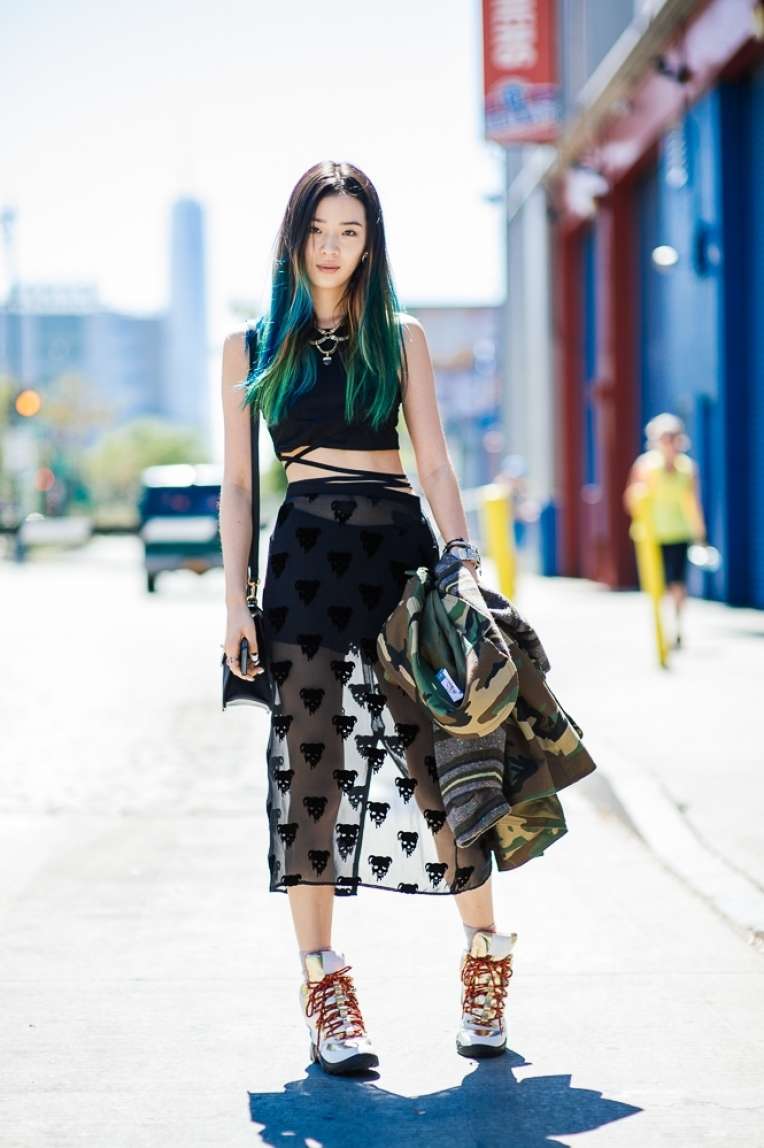
Each of these street style stars has cobbled together an online brand that must be continually built, nourished, and maintained (see Banet-Weiser 2012). Each actively seeks to cultivate relationships with their audiences, to charm them, dazzle them, inspire in them feelings of envy and desire, convince them to like, pin, and follow them across their social media portfolio. Street style stars, that is, must do the image-maintenance work of any celebrity, micro or macro. Nonetheless, there is a tendency—in scholarly accounts, in the popular press, and among the Internet’s chattering classes alike—to dismiss their fame, as if it were somehow less famelike than some earlier version of fame, less tangible, less real, less based on actual accomplishments. “Famous for being famous” goes the common, bluntly dismissive allegation against street style stars like Irene Kim, as if their online stardom appeared by an act of the digital gods. Their fame was conjured into being. A great swelling tide carried it across the Internet.

In March 2013, the New York Times published a web feature about street style star Michelle Harper. The author referred to Harper as “an extremely provisional celebrity” and pooh-poohed her online pervasiveness even while actively contributing to it (Lippman 2013). Such ambivalence marks the status of the street style star. They capture our gaze, but seldom our respect. “Michelle Harper, a 35-year-old woman is semi-famous for no reason,” writes blogger Lion of the Blogosphere. “She has no real job, just a mysterious self-employment as a ‘brand consultant’ with clients who, except for her sister-in-law, cannot be named.” “Don’t know much about her,” writes Miss Dalloway on The Fashion Spot, an online forum for fashion industry insiders, “except that she’s a fashion personality.” Personality, it would seem, is all that Harper has got going for her. Not that you would know that from her pictures. She is photographed, typically, according to the staid conventions of “straight-up” street style photography (see Rocamora and O’Neill 2008; Luvaas 2016): a lone individual, strangely isolated in a crowd of fashion show attendees, facing directly towards the camera, arms at her side, blank expression on her face, like a mug shot, or an early anthropological field expedition photo.
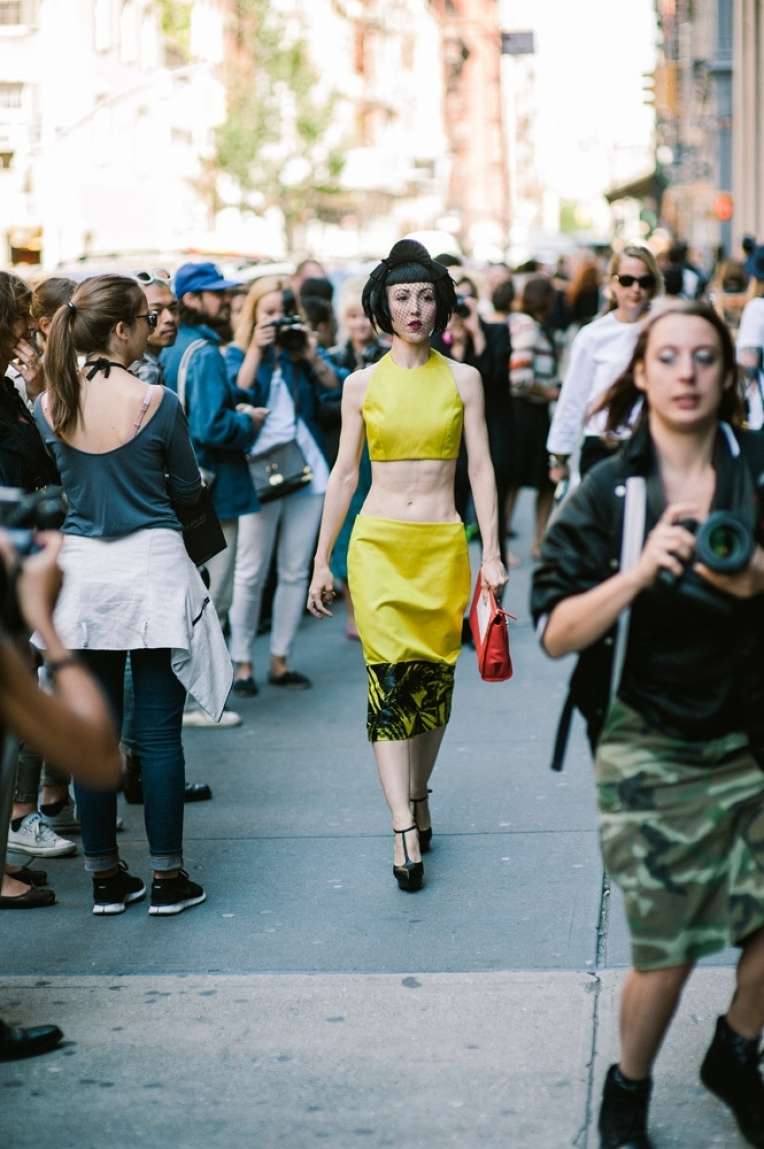
Michelle Harper, in her common street style depiction, is a visual example, a type as much as a person. In online forums and fashion industry editorial accounts, little thought is given to the behind-the-scenes movements that led Harper to become a street style star in the first place: the networking she engaged in to attend the shows, the brands she convinced to loan her the outfits that she wears to the shows, or the photographers she persuaded to take her picture once there. Her agency is muted through her persistent two-dimensional representation. But look at a photo of Harper in the midst of the action on the New York Fashion Week sidewalks and a different picture emerges: a bold, strident individual who has figured out how to capture the photographers’ attention. Harper works the sidewalks outside runway shows the way actors work the green room of an awards show.

The tendency in popular accounts of street style stardom is to treat it as a symptom of digital technology, nothing more, an unintentional byproduct of social media and the culture of online narcissism it has inspired (see Dean 2010; Turkle 2011). It is a mediated fame, a flimsy digital abstraction, unworthy of our full attention. But what these accounts seem to forget is that fame has always been equally mediated—through magazines, through celluloid, through television screens. And they seem to forget that mediation depends upon some immediate object, some real-world thing or person converted into “signal and noise” (Larkin 2008). Fame is built out of material human bodies moving through physical space, engaging and interacting with other material human bodies. It is forged in a social somewhere.

And not just any somewhere will do. Internet fame depends upon specific, often exclusive somewheres—the Alexander Wang runway show, the Kate Spade presentation, the Jeremy Scott after party, the Council of Fashion Designers of America (CFDA) awards—where the most fevered promotional work of the cultural industries (Hesmodhalgh 2007) takes place. At Mercedes-Benz New York Fashion Week, where I shot alongside dozens of other photographers for six seasons between 2013 and 2015, that somewhere is increasingly the sidewalk—a less rarified space that tricks observers into believing that Internet fame is somehow democratic. Nick Wooster, Chiara Feragni, Michelle Harper, and Irene Kim are street style stars because they were photographed on the right sidewalks at the right times by the right photographers—over and over again. And they were photographed by those photographers because they had convinced the photographers that they were worth photographing in the first place, that if the photographers would only take their picture and post it online, their own digital star would shine just a little brighter. Shooting at Fashion Week, it is hard not to get up caught up in the hype, the persistent logic of image accumulation and circulation that says, “If I could just get one more shot of Helena Bordon, my Instagram followers will go through the roof.”
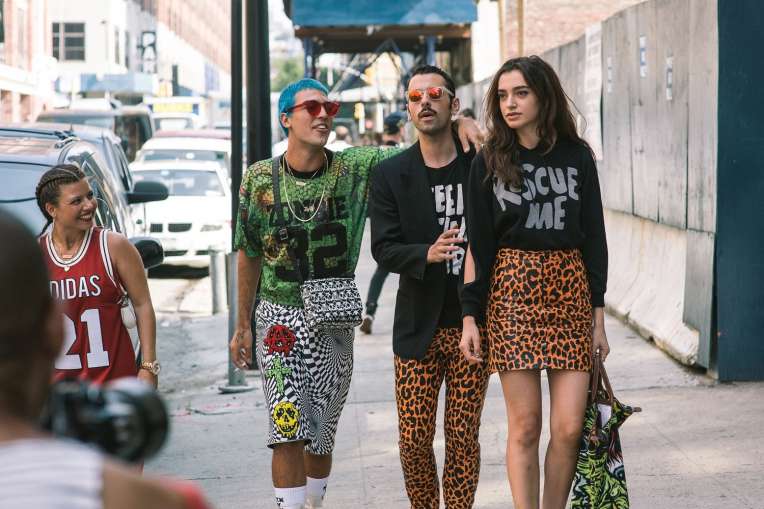
Street style stars are not the passive objects of another’s gaze; they actively seek to create that gaze, those decisive moments that define a meaningful composition. For Henri Cartier-Bresson (2015), the famed Parisian street photographer who coined the term, the “decisive moment” was the moment of action, the moment of pre-articulate decision-making in which a photographer exhibits a kind of preternatural ability to recognize the inchoate crystallization of an event before it actually happens. The decisive moment, that is, belongs to the photographer. It is theirs, both to recognize and to act upon. The decisive moment is decisive proof of a photographer’s exceptional status. It makes the documentary street photographer into an aesthetic hero, capable of recognizing the beauty in the everyday that others miss or ignore. The subjects of their photos, in contrast, were little more than unwitting accomplices in the transaction. But street style stars know better. They know that the decisive moment is a joint product of photographer and photographed. And they know that Fashion Week is a spectacular accumulation of such moment—moments staged, managed, thwarted, and remixed by multiple parties with multiple agendas.
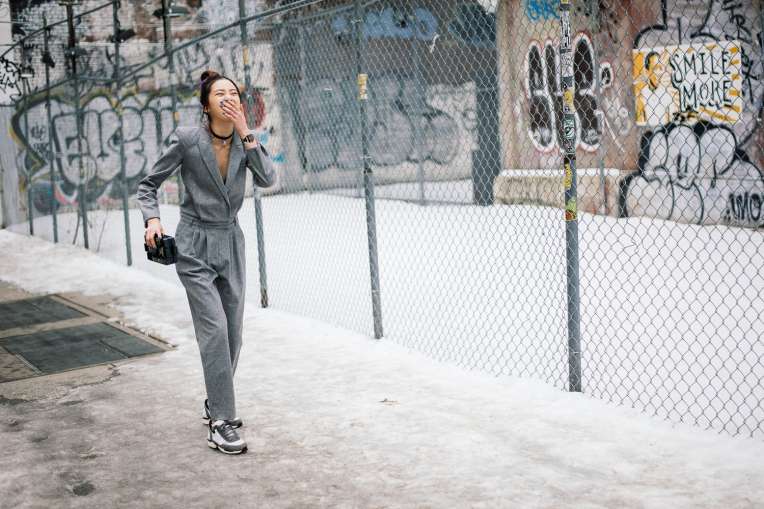
During my time at Mercedes-Benz New York Fashion Week, I saw, interacted with, and took thousands of pictures of would-be street style stars as part of a larger project on the promotional role of street style imagery within the fashion industry. I became another conduit for the circulation of street style stardom. And I watched, over several seasons, as some street style stars rose to fame and others faded away. Some stars rose quickly, like that of Irene Kim, a Korean-American model and television personality, who captured the attention of the photographers outside the shows by dressing in bold colors, running up and down the street, twirling and spinning madly, skating on sidewalk ice, even mounting a stalled tractor on the corner of 11th and 26th. Kim made herself into a street style sensation through sheer force of will.
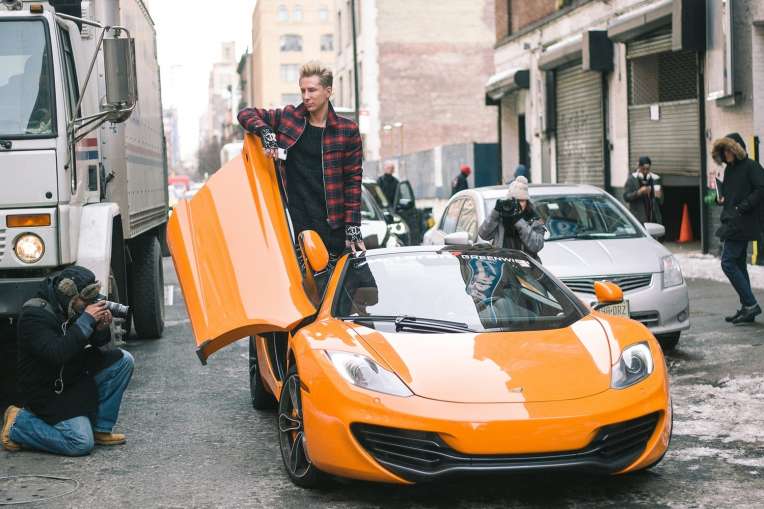
Other stars seemed stubbornly slow to rise, like that of Marie Claire editor Kyle Anderson, who dressed in the height of brand-loaned couture, even showed up to shows he had no intention of attending in flashy sports cars he was paid to endorse. Anderson was the first magazine editor to begin following my Instagram account. Not that I was anything special. He habitually follows the accounts of people who take his picture. At least for a while. It is a game we Instagrammers play: follow for follow, until following too many people starts to drag down your follower-to-following ratio. You have to know how to tip the popularity scales in your own favor. You have to make it appear that other people are more interested in you than you are in them. This is what the practice of distinction (see Bourdieu 1984) looks like in the digital age: take someone’s photo, post it online, appropriate their social capital, then ditch them and move on. It is a game that people throughout the fashion industry are now playing. The logic of street style stardom impacts editors, designers, even models. To be successful in the fashion industry today requires constant—and well-managed—visibility.

The scene outside Lincoln Center, the primary venue of New York Fashion Week until February 2015, was like the scene outside any major performing arts complex: a concrete courtyard with a fountain in the middle and imposing, stately buildings with lots of space in between. Only, instead of pigeons, lingering on the concrete, waiting for passersby to throw them some breadcrumbs, the Lincoln Center courtyard was animated by small clusters of photographers waiting for well-heeled fashionistas to stroll by. From a distance, in fact, we could easily be mistaken for pigeons. We moseyed here and there, occasionally taking flight when someone of note entered into view. Lesser-known fashion show attendees would be wandering lackadaisically toward the entrance to the tent, stopping for photographs when someone asked, loitering around the fountain when no one did. Other people seemed to be there for the express purpose of being photographed, and yet they didn’t want to be seen by others as being there for that. They had put on their best, bright, multicolored fur coats and black patent-leather boots and then they leaned against pillars and light posts, feigning indifference to the photographers’ gaze.

And what led to one person being photographed over another? Why were they picked out of a crowd? How did they draw the attention of the lenses? The simple, and probably misleading answer is their style, that little something extra—as vague and indeterminate as Weberian charisma—that most people simply do not possess. Anyone can be fashionable, of course, if they have access to the right resources. You just need to be able to keep up with the trends. But the stylish, photographers often tell me, just have it. And it is not measurable or definable (Mears 2011). It is something embedded in someone’s very being. It emanates off of them. It is visible from a distance.
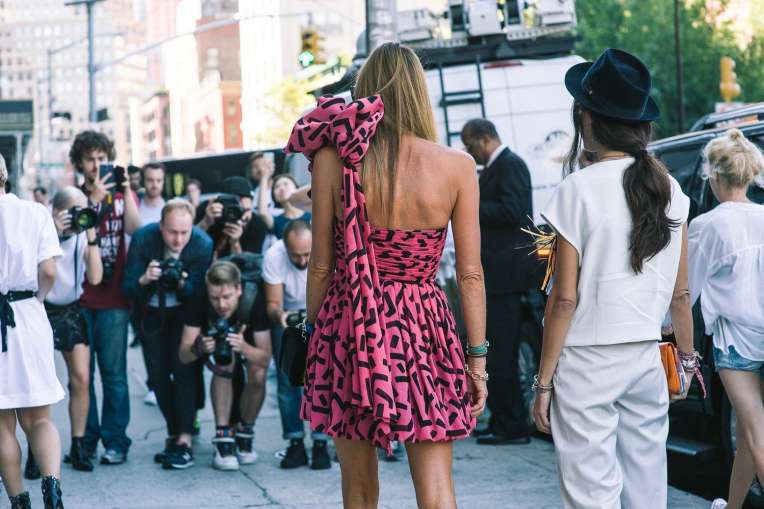
If only photographers could agree about what that little something extra was. If only they had some portable instrument that could convert it into a numerical value, detect it in a crowd. But they don’t. What they have instead is a photographer’s eye, cultivated over years of practice and formulated in conversation with thousands of other fashion photographs. The eye, in this case, is not merely the ocular instrument through which a photographer sees, but the affective instrument through which the photographers feels what she sees. It is intuitive, embodied, and most of all, automatic. It operates as a kind of style radar, an internal instrument for measuring external signals. Photographers send signals out into the ether, signals that bounce back at them when a stylish person passes. Fashion Week is riddled with such style-radar signals, signals crossed and tangled, signals woven into a dense tapestry of seeing and being seen. Fashion Week is so saturated with signals, in fact, it overwhelms a photographer’s style radar. When everyone’s got that little something extra, it becomes hard to even see it. Photographers have to depend on something else to pick it out.
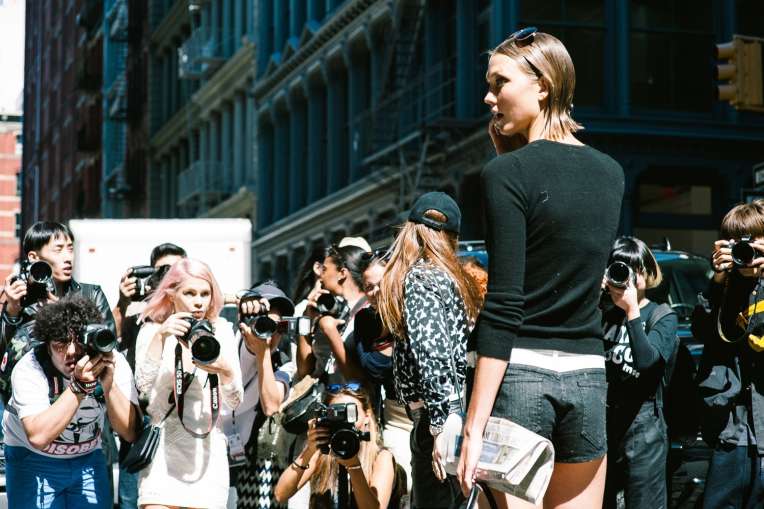
In the absence of a functioning style radar, photographers depend upon two other things to pick people out: 1) the established name of the person in question, which that person herself has carefully cultivated and which the photographers have dutifully memorized, and 2) the actions of other photographers. Sometimes there is a whisper in the crowd; a genuine street style star has appeared. “Miroslava Duma, steps.” “Karli Kloss, taxi cab.” Sometimes, there is simply a wave of motion, the hive mind triggering a spontaneous precognitive movement. Photographers, that is, use each other as style radars, their peripheral vision continually attuned to one another.
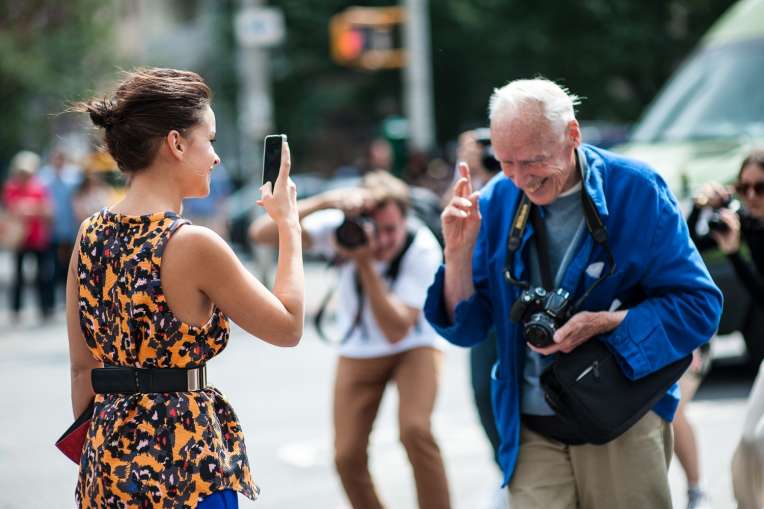
So how do you get the crowd on your side? One way is by wearing outlandish outfits, visible even on the haziest of winter days. That’s the strategy of Michelle Harper, Irene Kim, and hundreds of other fashion-show loiterers strolling past the crowds of photographers at Lincoln Center. It’s an obvious strategy, but a risky one. If the photographers see you as wearing a costume or trying too hard. they will do their best to ignore you. Alternatively, you can cultivate a subtle signature look, a tailored style that makes you attractive to a particular street style niche. That strategy takes time, and it takes a good deal of cultural knowhow. Not everyone can afford to pursue it. Not everyone would even know how. But in both cases there is a common denominator at play: interaction. You become a street style star on the streets of Fashion Week, working the pavement outside runway shows, trading phone numbers with photographers, sharing cabs to the next show, attending the coolest after parties, meeting the right people, and making a positive impression on them. You become a street style star, that is, because the right people like you—in person.
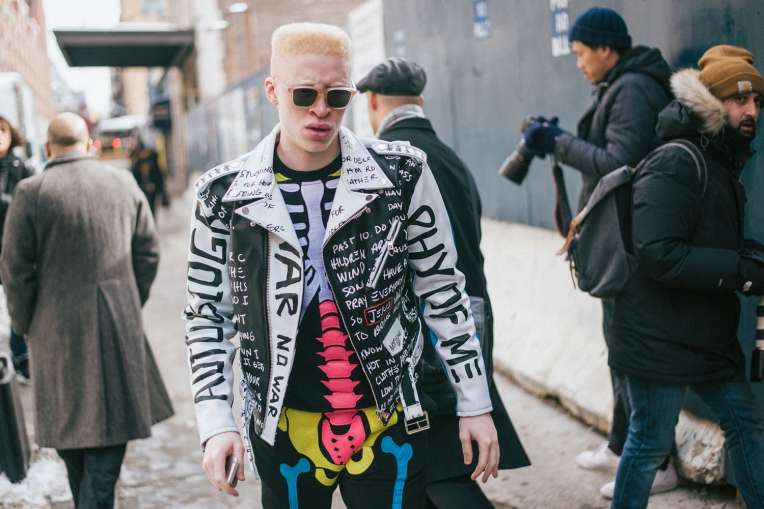
Internet fame, then, is not some cheap imitation of fame, some degraded digital version like an MP3 or an MOV, but fame as it always has been: a mediation between multiple parties carried out in exclusive physical spaces, an entangled, tenuous, and intimate becoming. Regardless of the rhetoric espoused by the digital detractors, Internet fame is still, by and large, built in real life. It still depends on networks and relationships. It still requires showing up somewhere and doing something. And it still carries the burden of in-person recognition. What I have learned from shooting at Mercedes-Benz New York Fashion Week these last few years is that there is no such thing as Internet famous or famous for being famous. There is only being famous—with all the profits and pitfalls that entails.
Reviewer Comments
Our reviewers for this photo essay were Stephanie Sadre-Orafai, an assistant professor of anthropology and codirector of the Critical Visions certificate program at the University of Cincinnati (Reviewer A), and Christina Moon, an assistant professor of fashion studies in the School of Art and Design History and Theory at Parsons School of Design (Reviewer B).
Based on Sadre-Orafai and Moon’s reviews, Photo Essays editors Vivian Choi and Michelle Stewart gave the following comments to Luvaas:
Your essay points to the ways in which new modes of image production and self-made fashion fame still rely on the ways in which normal celebrities are. Can you more pointedly address issues surrounding the contemporary media-saturated, late–capital/industrial/neoliberal moment toward which your photo essay gestures? You briefly mention the precarity of fame and the labor of self-made celebrities as the “ultimate personification of neoliberal agency,” and we wonder if you could elaborate a bit more in your discussion of the images. Reviewer A’s comments might be helpful in this regard:
“While [the author] is right to emphasize the agency of the street style star, s/he could make more of the street style circuit’s excesses (I’m thinking of David Novak’s Japanoise: Music at the Edge of Circulation). That is, some of the author’s explanations seem too neat. This could be due to the necessarily brief space allotted and/or because several different kinds of street style star are collapsed in this analysis. Gesturing towards this messiness and/or the multiple circuits and trajectories would help.”
Reviewer B offers this helpful information regarding the proliferation of fashion media:
“This is a historically informed phenomenon, by the way. The images we see in the essay are also the evidence of the deregulation of media industries throughout the 1990s, which brought fashion billboards, building-sized fashion advertisements, and fashion ad campaigns flashing LED screens to the most commercial neighborhoods of New York City where they had never been before. This deregularization of the media industries is also what has significantly propelled fashion’s globalization around the world.”
In response, Luvaas . . .
“Added more discussion on neoliberalism, affective, venture, and glamour labor on page 2: ‘Chiara Ferragni, for instance, as a personal-style blogger turned street style star turned brand ambassador and model; or Nickelson Wooster as a style consultant turned menswear icon turned Creative Director of Men’s Clothing at JCPenney, turned, at last, free-agent entrepreneur, the ultimate personification of neoliberal agency (see Gershon 2012). Street style stars perform the affective (Hesmondhalgh and Baker 2011), “venture” (Neff 2015), and “glamour labor” (Wissinger 2015, 2) so characteristic of the cultural industries today. They have not only adapted to this hypermediated moment of unprecedented brand intrusion and suffusion, they have embraced and embodied it, using their own self-consciously branded personae to stand out in a cluttered field of visual noise (cf. Novak 2013).’”
Reviewer A also wrote:
“Still, the photographs in the essay are strong. I like the juxtaposition of the traditional street style portraits with the wider ethnographic scenes from multiple perspectives of the context in which they are shot. Of the opening four shots, image 4 is the weakest—it is a little too tight at the top compared to the other three images. If the author has a more suitable shot of Michelle Harper, s/he might consider replacing this one.”
In response, Luvaas . . .
“Replaced image 4 with a better‐composed image of Michelle Harper.”
Regarding images 14 and 16, Reviewer A wrote:
The photographs of Karlie Kloss (image 14) and Shaun Ross (image 16) seem somewhat out of place and may work against the author’s investigation of the phenomenon of being Internet famous. Unlike Irene Kim, who is repped by Elite World’s The Society as a special booking, Kloss and Ross are primarily runway and editorial models, not personalities in the same way that many of the street style stars the author is discussing are. Kloss and Ross are not famous for being famous, but for their modeling careers. . . . Perhaps what this calls for is more explicit engagement with the different routes into the street style circuit and its different trajectories (e.g., “personal-style blogger turned street style star turned brand ambassador and model” vs. model turned street style star).”
Luvaas made the following changes:
“In the text accompanying image 10, I explained how editors, models, and other figures in the fashion industry become entangled in the street style game as well. This is, in part, intended to justify the inclusion of images 14 and 16.”
We close with Christina Moon’s comments on Luvaas’ work and our current digital and technological milieu:
“This essay makes me want to draw parallels and ask, what is this new moment of public viewing? What ideas of glamor and fashion and modernity have coincided with technology and digital platforms, coming together in these pictures and these phenomena occurring in this twenty-first century? And what kind of labor is this . . . this curating art of self-management, where one’s private life and inner thoughts and public life and public performances seem to be entirely blurred? How is the capturing of this kind of ephemeral happening as ephemeral as the images themselves?”
References
Banet-Weiser, Sarah. 2012. AuthenticTM: The Politics of Ambivalence in a Brand Culture. New York: New York University Press.
Bourdieu, Pierrre. 1984. Distinction: A Social Critique of the Judgment of Taste. Translated by Richard Nice. Cambridge, Mass.: Harvard University Press.
Cartier-Bresson, Henri. 2015. The Decisive Moment. Göttingen: Steidl. Originally published in 1952.
Dean, Jodi. 2010. Blog Theory: Feedback and Capture in the Circuits of Drive. Malden, Mass.: Polity.
Gershon, Ilana. 2011. “Neoliberal Agency.” Current Anthropology 52, no. 4: 537–55.
Hesmondhalgh, David. 2007. The Cultural Industries. London: Sage.
______, and Sarah Baker. 2011. Creative Labour: Media Work in Three Cultural Industries. New York: Routledge.
Larkin, Brian. 2008. Signal and Noise: Media, Infrastructure, and Urban Culture in Nigeria. Durham, N.C.: Duke University Press.
Lippman, Elizabeth. 2013. “The DNA of Cool.” New York Times, March 7.
Luvaas, Brent. 2016. Street Style: An Ethnography of Fashion Blogging. New York: Bloomsbury.
Marwick, Alice E. 2013. Status Update: Celebrity, Publicity, and Branding in the Social Media Age. New Haven, Conn.: Yale University Press.
Mears, Ashley. 2011. Pricing Beauty: The Making of a Fashion Model. Berkeley: University of California Press.
Neff, Gina. 2015. Venture Labor: Work and the Burden of Risk in Innovative Industries. Cambridge, Mass.: MIT Press.
Rocamora, Agnès, and Alistair O'Neill. 2008. “Fashioning the Street: Images of the Street in the Fashion Media.” In Fashion as Photograph: Viewing and Reviewing Images of Fashion, edited by Eugenie Schinkle, 185–99. London: I. B. Tauris.
Turkle, Sherry. 2011. Alone Together: Why We Expect More from Technology and Less from Each Other. New York: Basic Books.
Wissinger, Elizabeth A. 2015. This Year's Model: Fashion, Media, and the Making of Glamour. New York: New York University Press.